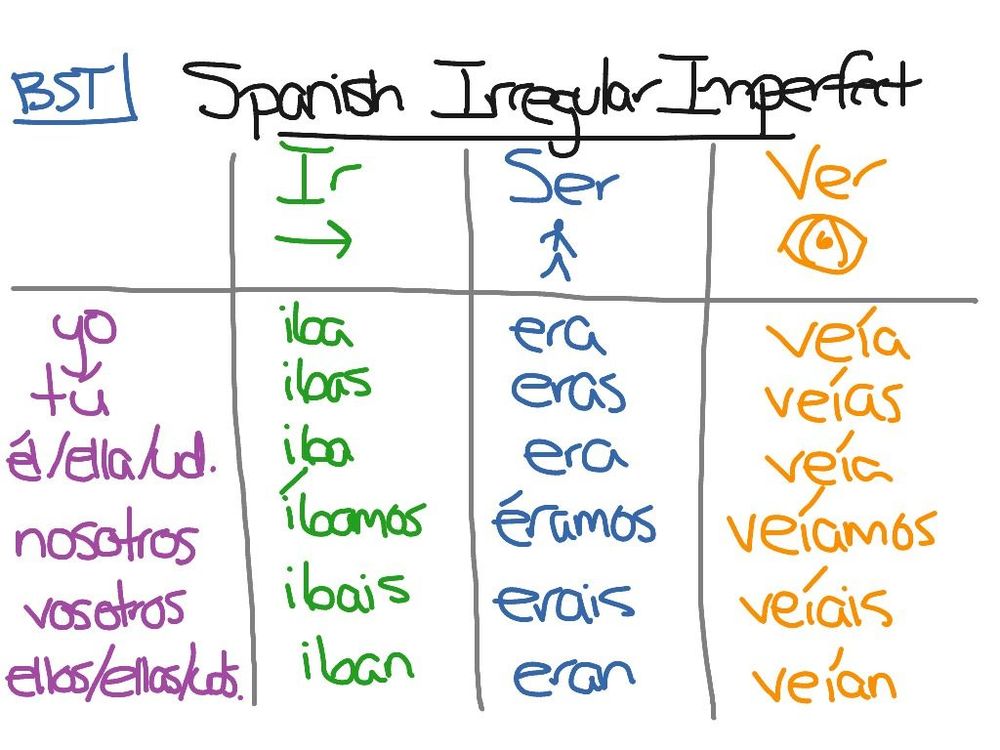

So based on that, my advice would be to get out there, get speaking with real people, and you’ll find yourself using (+ remembering) the verbs you need. And it still wasn’t until I spent some time living in Costa Rica and later when I began to teach Spanish that everything became more and more rock solid. Apps, iPads, and italki weren’t in my everyday vocabulary and the majority of my verb conjugations were learnt from writing and re-writing verb tables. When I first started learning Spanish, things were very different to how they are now. So watch out and notice when a verb ending points at a conjugation with -er, -ar and so on. Spanish is quite forgiving with an irregular verb as long as you get the endings right.Įmbrace verb groups – they’re a huge help in the Spanish language and will give you a sense of navigation around the language.

You won’t always get it right, but over time (and it DOES take time), and with enough ongoing attention, you’ll start to understand what sounds right and what doesn’t.Ĭut down your requirements and prioritise the conjugations that you really need, but make sure you know all 6 of the core endings. So go out and speak, read books, watch movies, and…ģ) Simply notice what verb conjugations are being use, when, and why. You need to get it off the page, out of the book, and in to the real world. Rather, you’re just “priming” your brain with the rules, so that when you encounter them in real life they’re not totally unfamiliar.Ģ) Moving beyond this stage and beginning to internalise the rules will not come from “study”, for the reasons outlined above. You’re not aiming to master them, or to obsess over getting them right. So here’s what I’d do myself if I was starting from scratch:ġ) Get a good grammar book and familiarise yourself with as many of the rules of conjugation as possible. Now, this is all very well, but it’s not exactly what you’d call actionable advice!

A particular conjugation either sounds right or it doesn’t.
#SPANISH ENDINGS CHART HOW TO#
In other words, hearing verbs used by Spanish speakers so much that you begin to instinctively know how to conjugate them yourself. The point where you begin to feel a mastery of Spanish verbs only comes from one place: usage. So here are the responses from the language learning experts that were kind enough to give up their time to help you with this common challenge that all Spanish students have to deal with: To answer this question, I reached out to some of the best language learning minds on the internet for their thoughts and opinions. So, with so much to take in, how should you learn them? To understand them all you need to study the differences between the subjunctive, the indicative and the imperative moods, and all of the rules for talking about the past, present and future. In fact, there are 18 Spanish verb tenses and moods. And this makes complete sense since there is a lot to know when it comes to verb conjugations in Spanish! Other notable challenges include fear of making mistakes, not having enough time to practice, and not being able to find people to practice with.Īt the top the list, though, is learning verb conjugations. More specifically, you tell me that learning Spanish verb conjugations is one of your top three challenges with learning Spanish. On average, one in four readers of this blog (data from the last 12 months) asks me about how to learn Spanish verb conjugations.


 0 kommentar(er)
0 kommentar(er)
